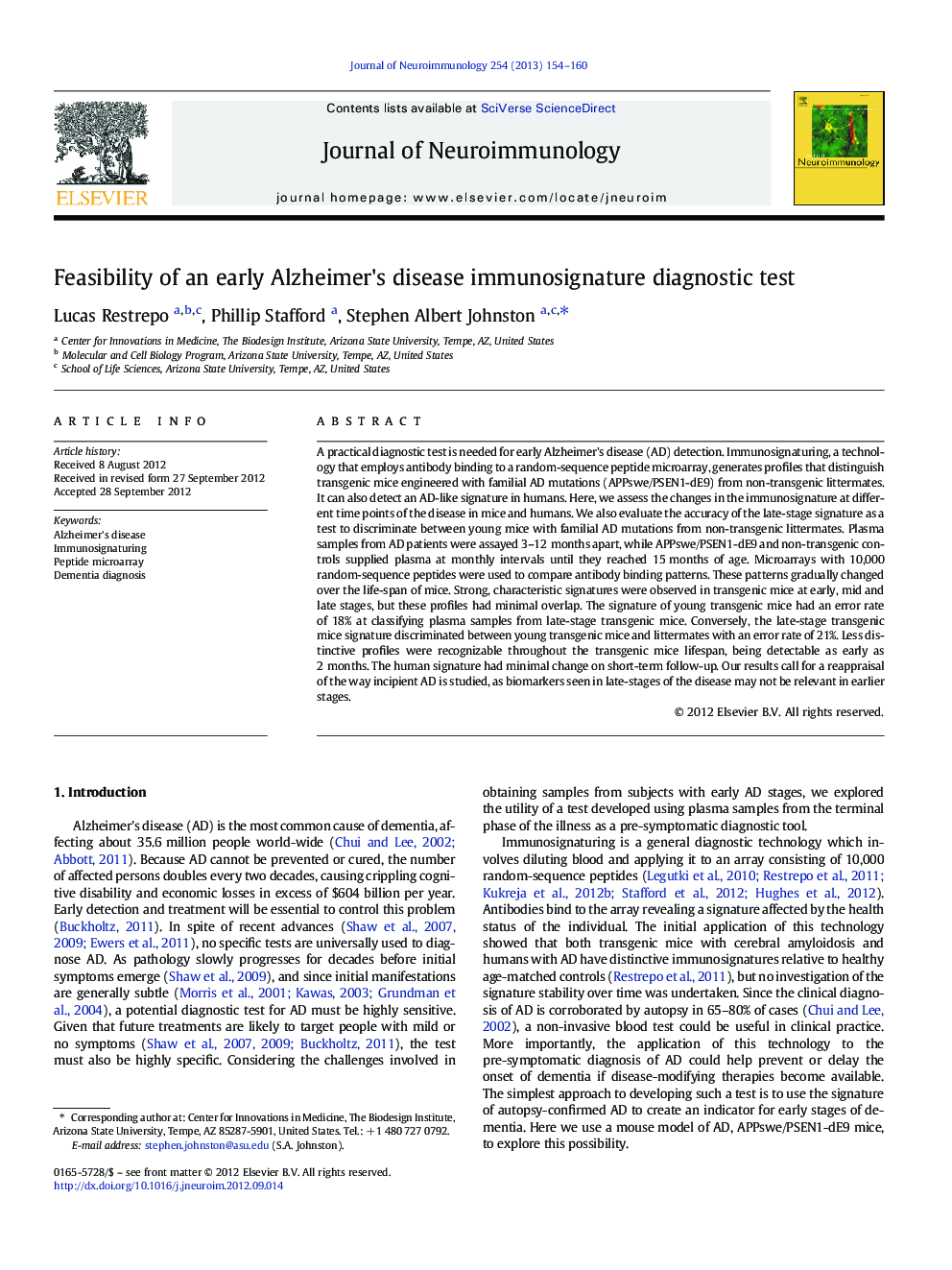| Article ID | Journal | Published Year | Pages | File Type |
|---|---|---|---|---|
| 6020761 | Journal of Neuroimmunology | 2013 | 7 Pages |
Abstract
A practical diagnostic test is needed for early Alzheimer's disease (AD) detection. Immunosignaturing, a technology that employs antibody binding to a random-sequence peptide microarray, generates profiles that distinguish transgenic mice engineered with familial AD mutations (APPswe/PSEN1-dE9) from non-transgenic littermates. It can also detect an AD-like signature in humans. Here, we assess the changes in the immunosignature at different time points of the disease in mice and humans. We also evaluate the accuracy of the late-stage signature as a test to discriminate between young mice with familial AD mutations from non-transgenic littermates. Plasma samples from AD patients were assayed 3-12Â months apart, while APPswe/PSEN1-dE9 and non-transgenic controls supplied plasma at monthly intervals until they reached 15Â months of age. Microarrays with 10,000 random-sequence peptides were used to compare antibody binding patterns. These patterns gradually changed over the life-span of mice. Strong, characteristic signatures were observed in transgenic mice at early, mid and late stages, but these profiles had minimal overlap. The signature of young transgenic mice had an error rate of 18% at classifying plasma samples from late-stage transgenic mice. Conversely, the late-stage transgenic mice signature discriminated between young transgenic mice and littermates with an error rate of 21%. Less distinctive profiles were recognizable throughout the transgenic mice lifespan, being detectable as early as 2Â months. The human signature had minimal change on short-term follow-up. Our results call for a reappraisal of the way incipient AD is studied, as biomarkers seen in late-stages of the disease may not be relevant in earlier stages.
Related Topics
Life Sciences
Immunology and Microbiology
Immunology
Authors
Lucas Restrepo, Phillip Stafford, Stephen Albert Johnston,
